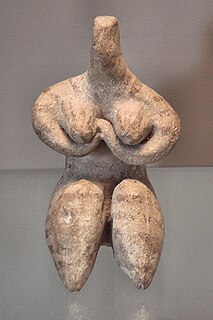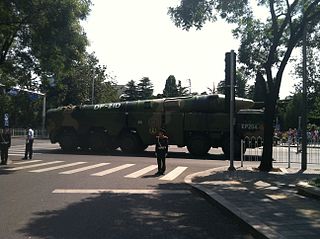
The 3rd millennium BC spanned the years 3000 through 2001 BC. This period of time corresponds to the Early to Middle Bronze Age, characterized by the early empires in the Ancient Near East. In Ancient Egypt, the Early Dynastic Period is followed by the Old Kingdom. In Mesopotamia, the Early Dynastic Period is followed by the Akkadian Empire.

The 4th millennium BC spanned the years 4000 through 3001 BC. Some of the major changes in human culture during this time included the beginning of the Bronze Age and the invention of writing, which played a major role in starting recorded history.
The 25th century BC was a century which lasted from the year 2500 BC to 2401 BC.

Sumer is the earliest known civilization in the historical region of southern Mesopotamia, emerging during the Chalcolithic and early Bronze Ages between the sixth and fifth millennium BC. It is also one of the first civilizations in the world, along with Ancient Egypt, Norte Chico, Minoan civilization, Ancient China and the Indus Valley. Living along the valleys of the Tigris and Euphrates, Sumerian farmers grew an abundance of grain and other crops, the surplus from which enabled them to form urban settlements. Prehistoric proto-writing dates back before 3000 BC. The earliest texts come from the cities of Uruk and Jemdet Nasr, and date to between roughly c. 3500 and c. 3000 BC.
The 26th century BC was a century which lasted from the year 2600 BC to 2501 BC.

The Sumerian King List is an ancient text in the Sumerian language, listing kings of Sumer from Sumerian and neighboring dynasties, their supposed reign lengths, and the locations of the kingship. This text is preserved in several recensions. The list of kings is sequential, although modern research indicates many were contemporaries, reflecting the belief that kingship was handed down by the gods and could be transferred from one city to another, asserting to a hegemony in the region.
The 27th century BC was a century which lasted from the year 2700 BC to 2601 BC.

The history of Sumer, taken to include the prehistoric Ubaid and Uruk periods, spans the 5th to 3rd millennia BCE, ending with the downfall of the Third Dynasty of Ur around 2004 BCE, followed by a transitional period of Amorite states before the rise of Babylonia in the 18th century BCE.
The 29th century BC was a century which lasted from the year 2900 BC to 2801 BC.
The 30th century BC was a century which lasted from the year 3000 BC to 2901 BC.
The 31st century BC was a century which lasted from the year 3100 BC to 3001 BC.

The First Dynasty of Ur was a 26th century-25th century BCE dynasty of rulers of the city of Ur in ancient Sumer. It is part of the Early Dynastic period III of the History of Mesopotamia. It was preceded by the earlier First dynasty of Kish and First Dynasty of Uruk.
This timeline of ancient history lists historical events of the documented ancient past from the beginning of recorded history until the Early Middle Ages.

The art of Mesopotamia has survived in the archaeological record from early hunter-gatherer societies on to the Bronze Age cultures of the Sumerian, Akkadian, Babylonian and Assyrian empires. These empires were later replaced in the Iron Age by the Neo-Assyrian and Neo-Babylonian empires. Widely considered to be the cradle of civilization, Mesopotamia brought significant cultural developments, including the oldest examples of writing.

Enakalle, or Enakalli, was the king of Umma circa 2500–2400 BC, a Sumerian city-state, during the Early Dynastic III period.
Syunik was the ninth province (nahang) of the Kingdom of Armenia from 189 BC until 428 AD. The region of Syunik Province geographically were called Siounia Caucasiana in the V-VIth century “Ravenna Cosmography”. From the 7th to 9th centuries, it fell under Arab control. In 821, it formed two Armenian kingdoms: Kingdom of Syunik and principality of Khachen, which around the year 1000 was proclaimed the Kingdom of Artsakh, becoming one of the last medieval eastern Armenian kingdoms and principalities to maintain its autonomy following the Turkic invasions of the 11th to 14th centuries.

Tell al-'Ubaid is a low, relatively small tell west of nearby Ur in southern Iraq's Dhi Qar Governorate. The majority of the remains are from the Chalcolithic Ubaid period, for which Tell al-'Ubaid is the type site, with an Early Dynastic temple and cemetery at the highest point.

The WS2600 is a 22.5 ton 10x8 and 10x10 transporter erector launcher used by the People's Liberation Army Rocket Force of the People's Republic of China. It is, along with the smaller WS2500, one of the principle mobility platforms in mounting China's medium-range ballistic missiles.
This page is based on this
Wikipedia article Text is available under the
CC BY-SA 4.0 license; additional terms may apply.
Images, videos and audio are available under their respective licenses.









